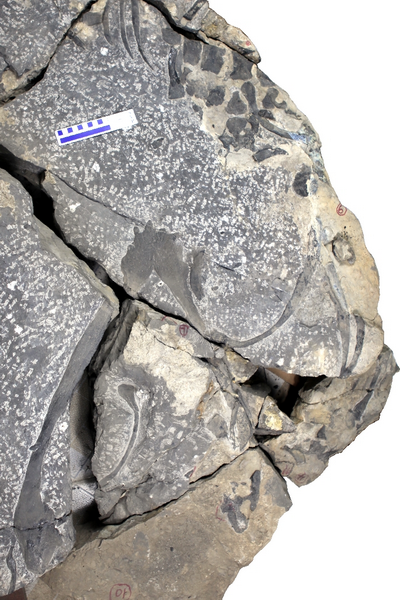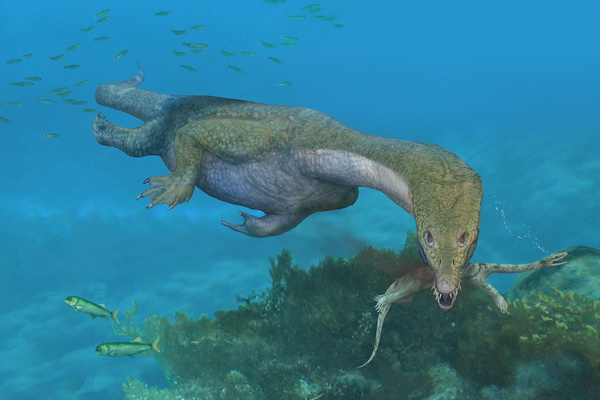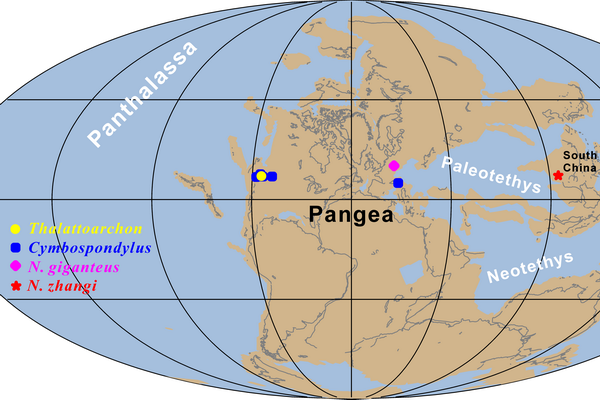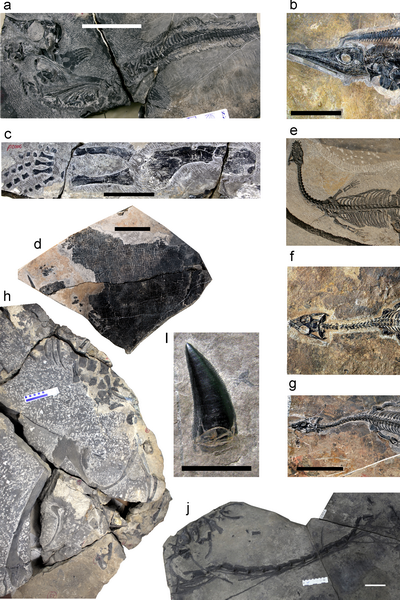“A gigantic nothosaur (Reptilia: Sauropterygia) from the Middle Triassic of SW China and its implication for the Triassic biotic recovery”, a joint study by HFUT Associate Professor Liu Jun and other institutes like Chengdu Center, China Geological Survey, National Museum of Natural History, Washington D , University of Bristol and University of Sydney was published by “Scientific Reports” of Nature online. As the highlight of researches in Asia-Pacific, the study was reported by dozens of international media including Daily Mail and CNN.
The study was funded by National Natural Science Foundation of China, the State Key Laboratory of Palaeobiology and Stratigraphy Program, the HFUT Innovation Fund for Young Teachers and the fund from China Geological Survey.
The Permian-Triassic mass extinction (PTME) was the largest biodiversity crash of the Phanerozoic, leading to the extinction of almost 90% of creatures on earth. The study on the mass extinction and the ensuing recovery of the biosphere is of great relevancy to our understanding of the catastrophe in the biosphere due to global warming today. “Although devastating to the pre-existing biota, recovery from the PTME facilitated emergence of several entirely new groups, most strikingly, the appearance of Mesozoic marine reptiles.” Although the recovery has attracted wide attention from the paleontologists, whether the timing of biotic recovery in the sea from this mass extinction is synchronous or not has been puzzling.
Nothosaurus zhangi falls into the type of Sauropterygia that dominated the ocean in the Mesozoic Era. The most striking feature of it is a biggest complete lower jaw in all known Sauropterygia in Triassic.

Figure 1 | Nothosaurus zhangi (reference from the paper)
Similar to the Plesiosaur in Jurassic-Cretaceous Era and other nothosauroids in Triassic, the N. Zhanggi uses its forelimbs as the primary propulsive organs to prey underwater. With five to 7 meter meters in length, it also has fang-like concial teeth. Thus, N. zhangi could prey on large fish and other marine reptiles.

Figure 2 | N. Zhanggi preying on Pachypleurosaurus (Graphed by Dr. Brian Choo)
N. giganteus from basins in Germany is another huge Nothosaurus with a length of over five meters. “This result demonstrates parallel evolution of gigantism in Triassic sauropterygians”.

Figure 3 | Phylogenetic relationships and stratigraphic occurrences of Nothosauria
(reference from the paper)
Middle Triassic gigantic apex marine predators have not yet been recorded from the eastern Tethyan/western Panthalassic province until of discovery of N. Zhanggi.

Figure 4 | the global distribution of Anisian gigantic apex predators in the sea
(reference from the paper)
“The first appearance of gigantic apex predators in the sea from the eastern Panthalassic and western Tethyan provinces coincides with this diversity peak. The appearance of such gigantic apex predators, together with associated complex food webs, has been taken as an indicator of the full recovery of marine ecosystems from the PTME.”

Figure 5 | Marine reptiles from Luoping biota (reference from the paper)
Many prehistorical creatures have already been discovered by Paleontologist in Luoping, Yunnan prior to the finding of N. Zhanggi such as marine reptiles like Ichthyosauria, Dinocephalosaurus and carnivorous and herbivorous fishes, Cephalopods, Gastropods as well as different microbes.

Figure 6 | Hypothesized food web of Luoping biota
The development of palaeontology in the School of Resources and Environmental Engineering has been under vigorous support from HFUT. More scientific achievements in this field would be made, nurturing more talents for the palaeontology in China.
Complete version available from: http://www.nature.com/srep/2014/141127/srep07142/full/srep07142.html


 HOME
/
Content
HOME
/
Content
